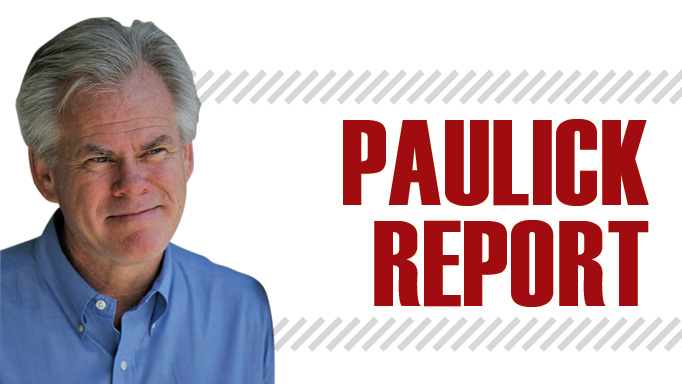Because Thoroughbred racing is devoid of national leadership or a structure that brings all of its parts together, the business and sport evolves without any of the traditional long-range planning you would find in most industries.
As a result, the racing business on this continent is driven by trial and error.
I’m afraid some developments in racing remind me of that old expression about how difficult it is to put toothpaste back in the tube. Figuratively speaking, racing has toothpaste spilled all over. Some examples:
Lasix – Let’s get this one out of the way first, and I know there will be plenty of pushback from some proponents of this medication.
When Lasix was first introduced to treat bleeders, it was done with the best of intentions. Horses that bled were treated with the diuretic and horsemen and veterinarians were convinced that it reduced the incidence of bleeding.
However, before long, we went from treating known bleeders to giving Lasix to horses that demonstrated the smallest trickle of blood on endoscopic examination. Horseplayers armed with this information found that “first-time Lasix” horses often showed dramatic improvement in form. Lasix became a handicapping tool because horseplayers were convinced it was a performance-enhancing drug.
Eventually, racing regulators just gave up and allowed Lasix to be given to any horse. That’s where we are today, with the vast majority of runners in North America getting an injection four hours before they race – whether they need it or not. This doesn’t happen in Europe, Asia, or Australia.
We don’t know if this drug causes short-term problems in horses because of the diuretic effect that could flush vital minerals from a horse. We do know that horses are racing fewer times with more recovery time required after a race. We also don’t know if the breed is being weakened by generations of Lasix-aided horses entering the breeding shed and gene pool.
Simulcasting – There may be no better example of bungling by racetrack executives than the price modeling for simulcasting when it first began. “It’s free money!” I remember one track manager telling me when he first began selling his signal to out-of-state operators for approximately 3 per cent – half of which would go to horsemen for purses. On a 20 per cent blended takeout, that left 15-16 per cent for the pari-mutuel operator at the receiving end – clearly an upside-down pricing model where the business putting on the show and creating the product received one-fifth of what the retail shop took in.
Over the years, as advance deposit wagering was introduced and premium racetracks recognized their signals were greatly underpriced, the upside-down model was gradually turned around – but not enough, which leads me to the next business oversight.
Rebate Operators – Smart business people saw upside-down simulcast pricing as an opportunity for exploitation, and racetracks played the role of suckers.
In a nutshell, here’s how it works: 1) rebaters, who operated offshore or in states where they did not have to share revenue with horsemen, bought simulcast signals at bargain prices (3 to 6 per cent); 2) with blended takeout at 20 per cent, that left a profit margin of almost 15 per cent; 3) the rebaters recruited big bettors, many of whom were wagering on-track, offering them up to 10 per cent rebates on all bets. This made the horseplayer happy but greatly reduced revenue to tracks and horsemen. With the rebates, those players became consistent winners at the expense of horseplayers who gambled on-track. Rebate operators have stolen racing’s best customers, and tracks are now afraid to cut them off for fear those customers will not return.
Advance Deposit Wagering – The simulcast signal that racetracks sell – to off-track betting facilities, other racetracks and advance deposit wagering companies – is owned by the tracks and horse owners. Those two entities – the tracks and horsemen – should be the ones who own and operate advance deposit wagering companies.
Instead, especially in the United States, private companies have stepped in, creating multiple ADW companies and taking a slice of revenue away from the simulcast signal owners – the horse owners and racetrack.
In a business where margins are thin and revenues flat or declining, it’s best to cut as few slices a possible in racing’s financial pie.


